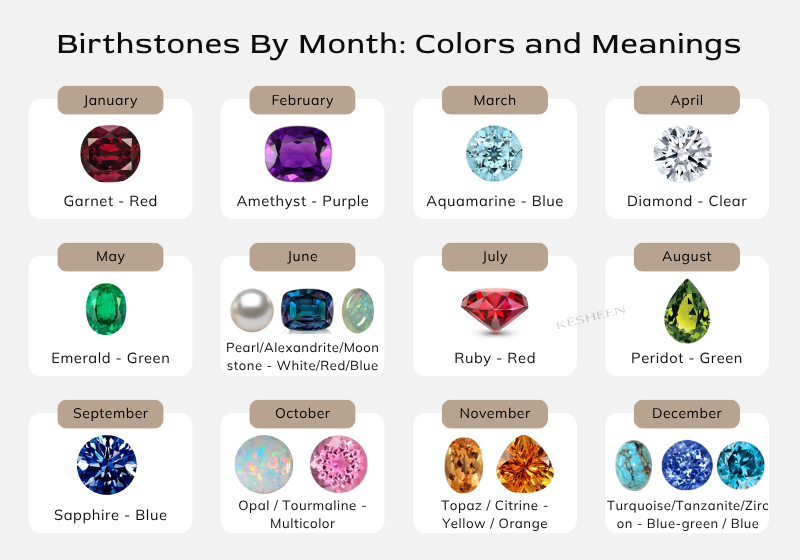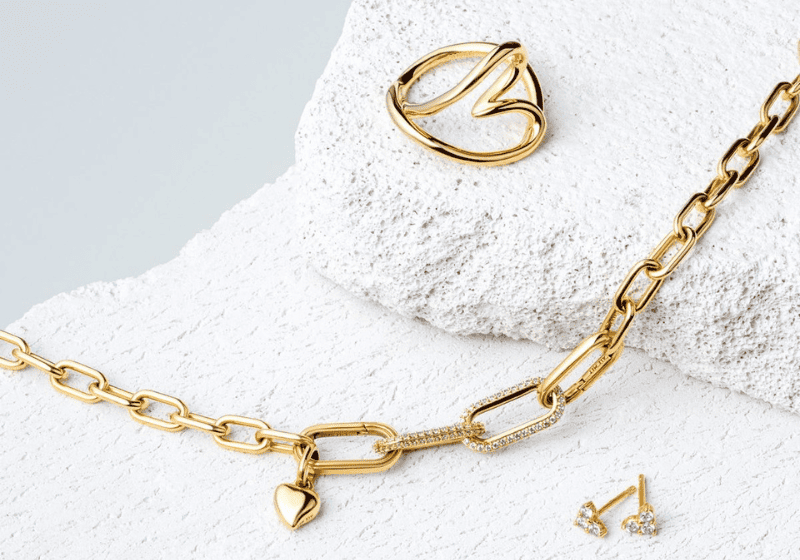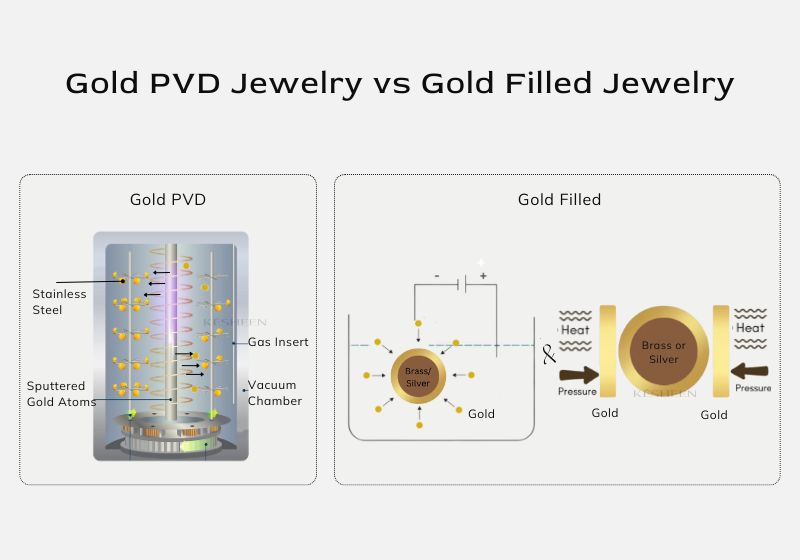When designing your jewelry lines, you’ll often come across three popular metals — stainless steel, sterling silver, and brass. But which is better for jewelry — brass or stainless steel? Or is sterling silver the smarter choice?
In this comprehensive guide, we will discuss how stainless steel, sterling silver, and brass jewelry compare with one another. We will look at their pros, cons, and differences to help decide which is right for you.
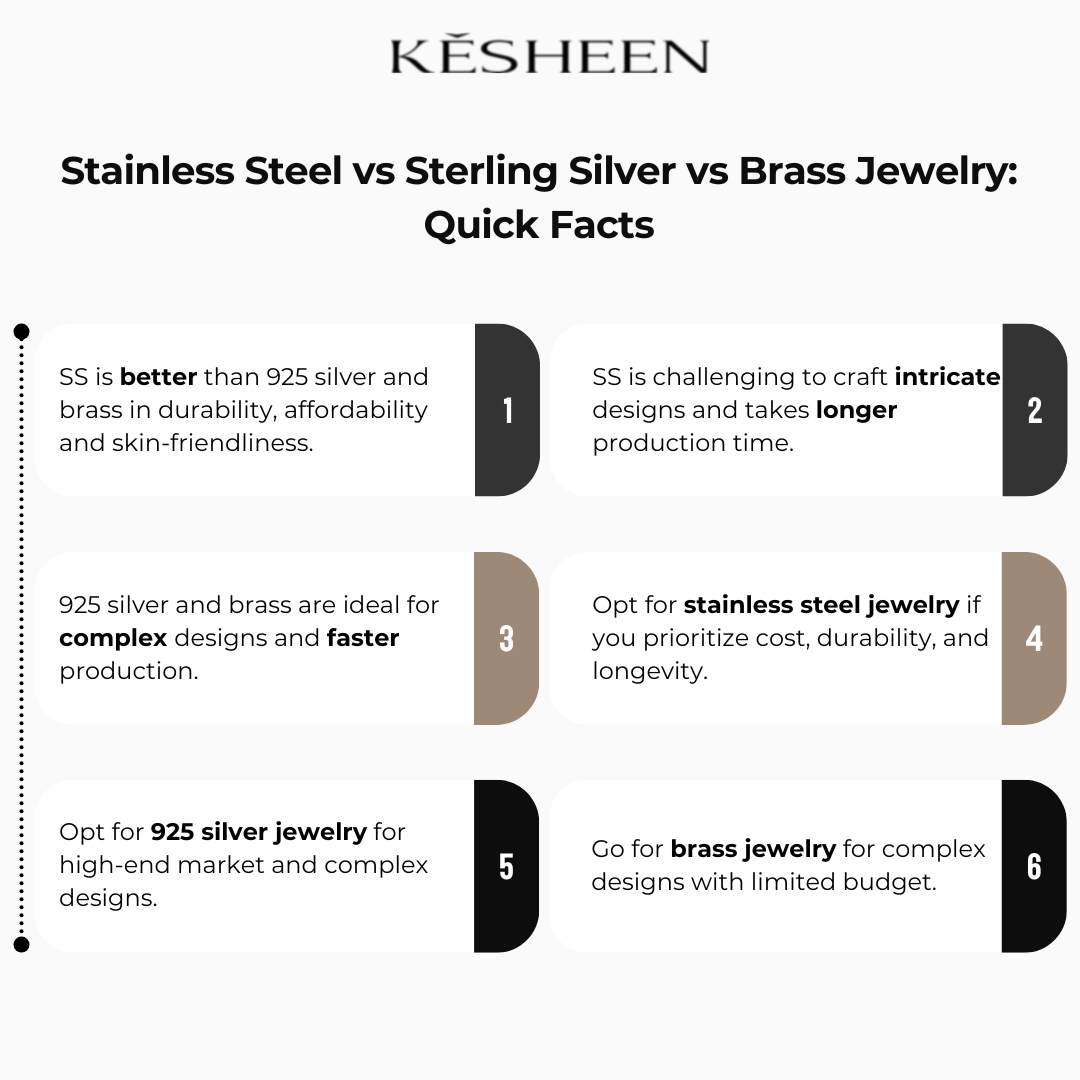
Stainless Steel Jewelry – Durability and Practicality
Stainless steel is made from a mix of iron, carbon, and chromium. It’s revered for its durability and practicality for everyday wear, active lifestyles, and minimalist fashion pieces.
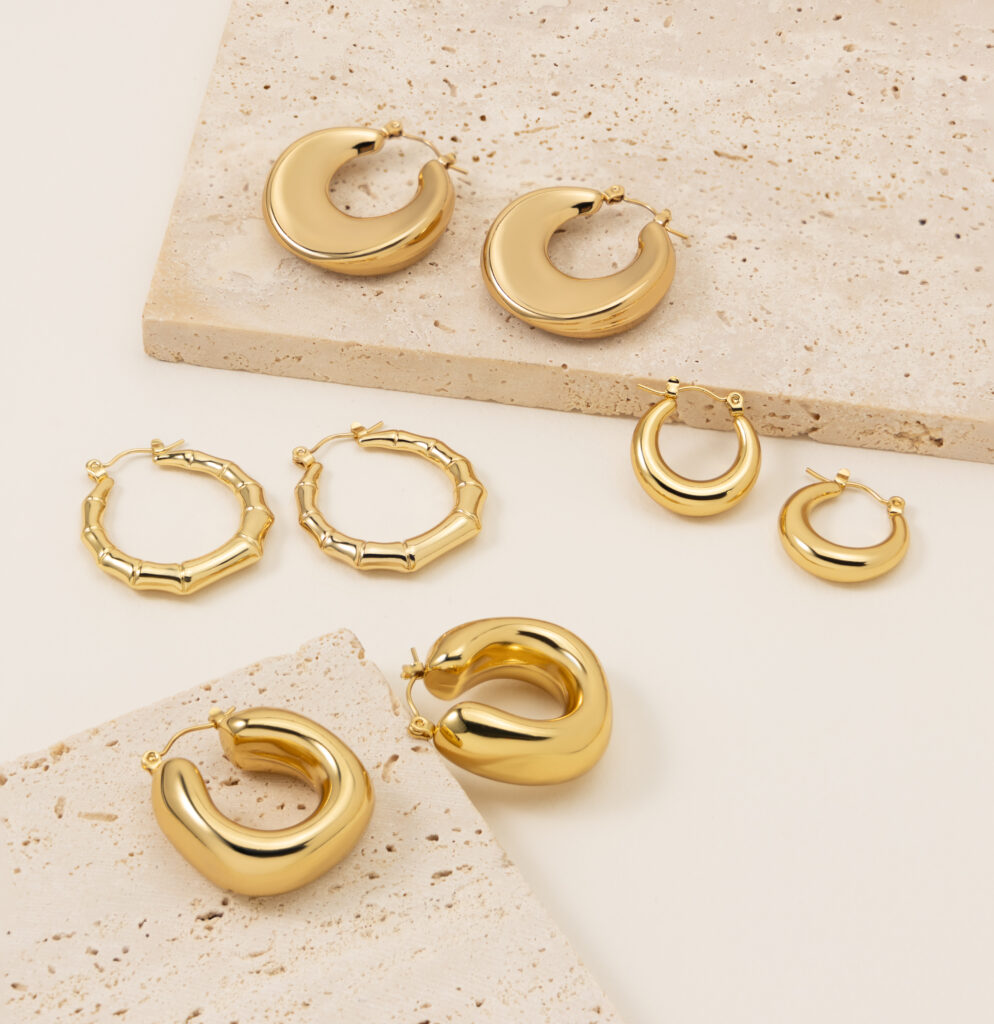
But what makes it stand out against sterling silver and brass? Let’s dive into the pros and cons of stainless steel jewelry.
Pros of Stainless Steel Jewelry
- Last Longer: Will (gold plated) stainless steel tarnish? Stainless steel jewelry is rust-free and tarnish free, maintaining its shine for a long period. Our in-depth guide on “is stainless steel jewelry waterproof enough” explains the reason and how to make it waterproof. SS jewelry without coating can last a lifetime.
- Much Affordable: As a non-precious metal, ss is easily available and affordable, an excellent choice for people who are on a budget.
- 100% Recyclable: Eco-conscious individuals appreciate ss for its recyclability. Its production and reuse have a lower environmental impact.
- Highly Hypoallergenic: For people with sensitive skin, ss, particularly surgical steel jewelry is a great option as it does not cause allergic reaction.
- Can Swim and Shower with: You can wear it while swimming, under the shower, or when sweating at the gym. It becomes extra-resistant to water when you apply titanium nitride coating for jewelry or PVD coating.
Cons of Stainless Steel Jewelry
- Less Flexible: Due to its hardness, ss is difficult to use for intricate jewelry designs. As a result, it’s often used in simpler jewelry styles.
- Longer Production Time: Because of its toughness, specialized tools and expertise are needed, leading to slower production time. For example, complex designs requiring stamping and casting techniques take about 1-3 weeks longer than sterling silver and brass.
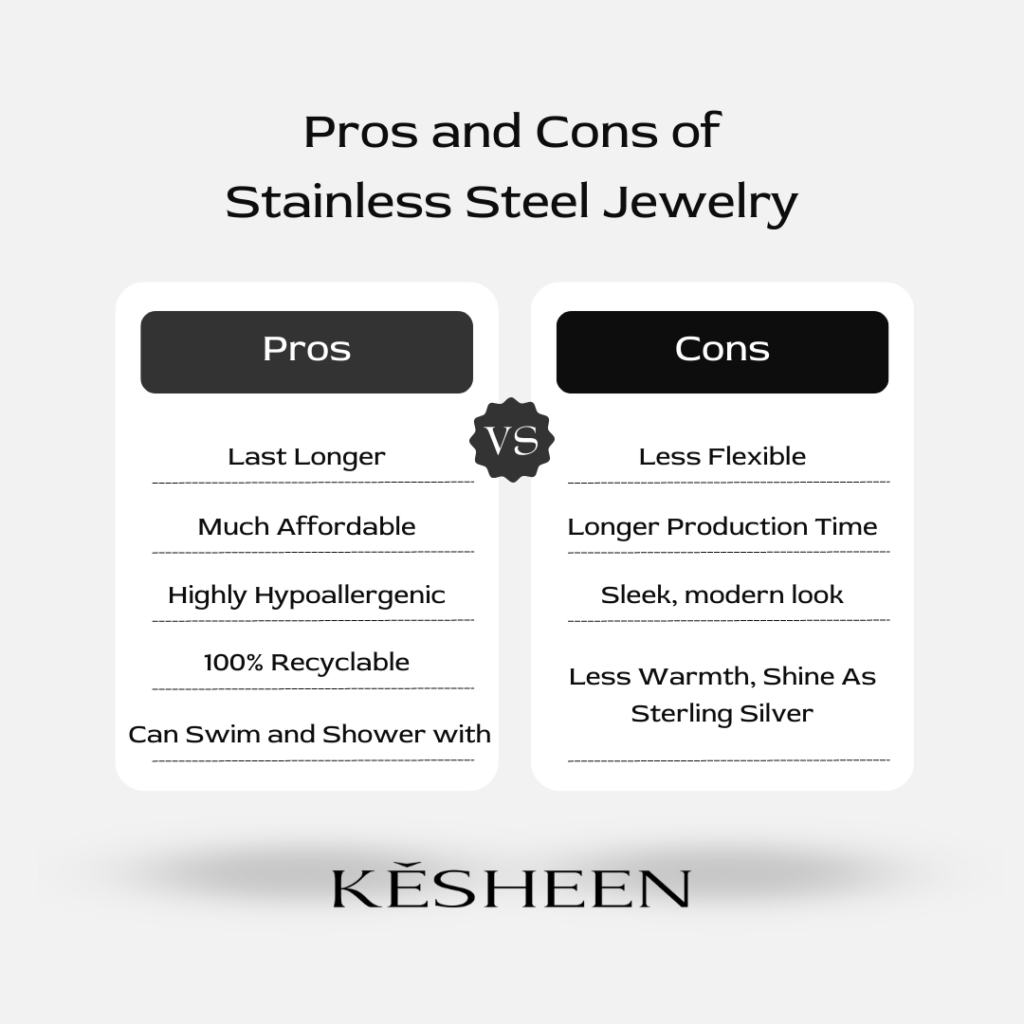
Sterling Silver Jewelry – Classic Elegance and Shine
Sterling silver is made from 92.5% pure silver and 7.5% copper. Hence, why it’s commonly called “925 sterling silver.” It’s a precious metal with an inherent value that retains its worth over time. Here are some pros and cons of sterling silver jewelry:
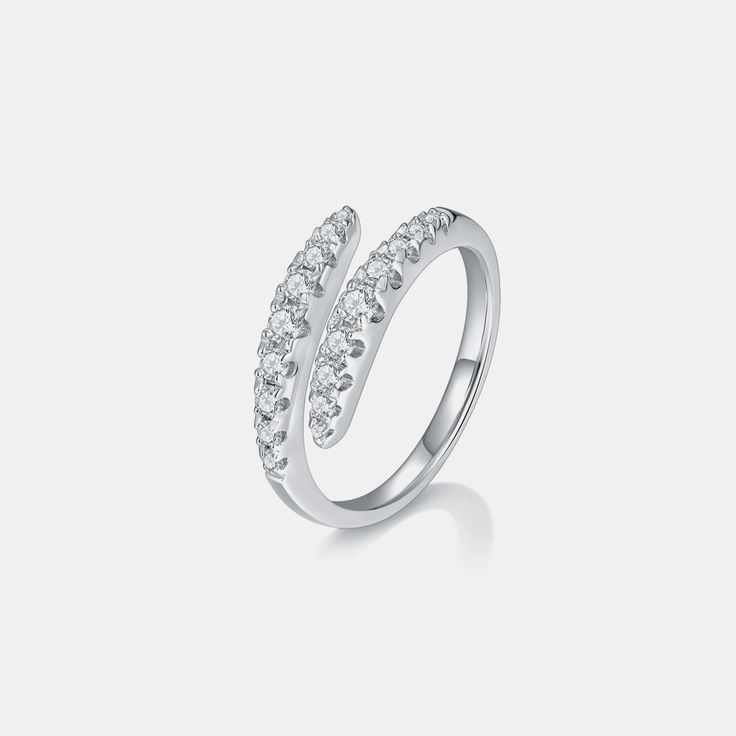
Source: Pinterest
Pros of Sterling Silver Jewelry
- Design Flexibility: Sterling silver is very malleable, making it suitable for creating intricate and minimalist designs.
- Hypoallergenic: Containing mostly pure silver (92.5 silver), sterling silver is a great choice for people with sensitive skin.
- Warm, Lustrous Appearance: Sterling silver has a warmer tone compared to stainless steel vs brass, making it have a different kind of aesthetic appeal.
Cons of Sterling Silver Jewelry
- Expensive than SS and Brass: This is one of the highlight of sterling silver vs brass vs stainless steel jewelry. As a precious metal, sterling silver is more costly than brass and stainless steel.
- Prone to Tarnishing: Can you shower with sterling silver? Is 925 sterling silver waterproof? Exposure to moisture and air can cause sterling silver to tarnish over time.
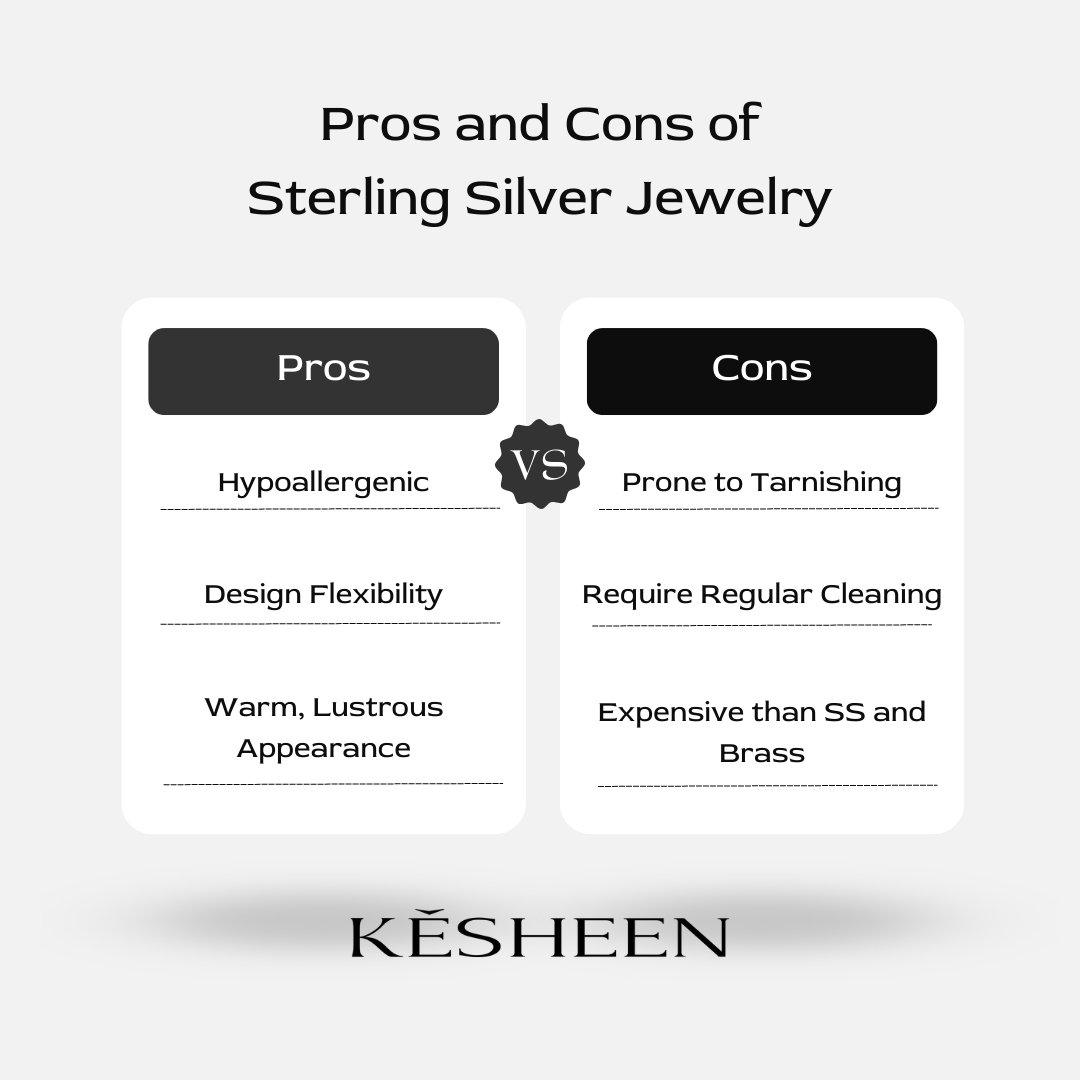
Brass Jewelry – Affordability and Versatility
Brass is composed of copper and zinc, and is popularly known for its yellow-gold color. It’s often used for trendy jewelry pieces used in fashion accessories because of its attractive gold-like appearance, without the exorbitant price of real gold. Here’s a breakdown of brass jewelry pros and cons:
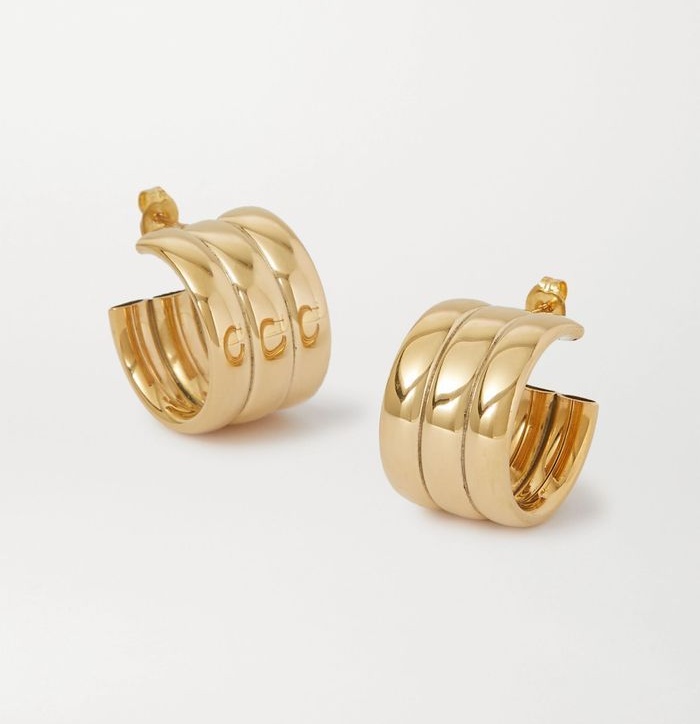
Source: Pinterest
Pros of Brass Jewelry
- Affordability: Is brass better than stainless steel or sterling silver? May be in budget-friendly and design complexity, brass is the ideal choice for some startup brands.
- Design Flexibility: Brass is malleable and can be easily shaped into intricate designs, making it suitable for bold and fashion-forward pieces.
Cons of Brass Jewelry
- Prone to Tarnishing: Brass is susceptible to air and moisture, developing a greenish layer over time. Thus, it requires more maintenance than ss and sterling silver.
- May Turn Skin Green: Is brass good for jewelry? Yes, but the copper in brass can oxidize when exposed to sweat, leaving a greenish tint on the skin.
- May Cause Skin Irritation: Copper and zinc alloys can trigger allergic reactions or skin irritation in sensitive people.
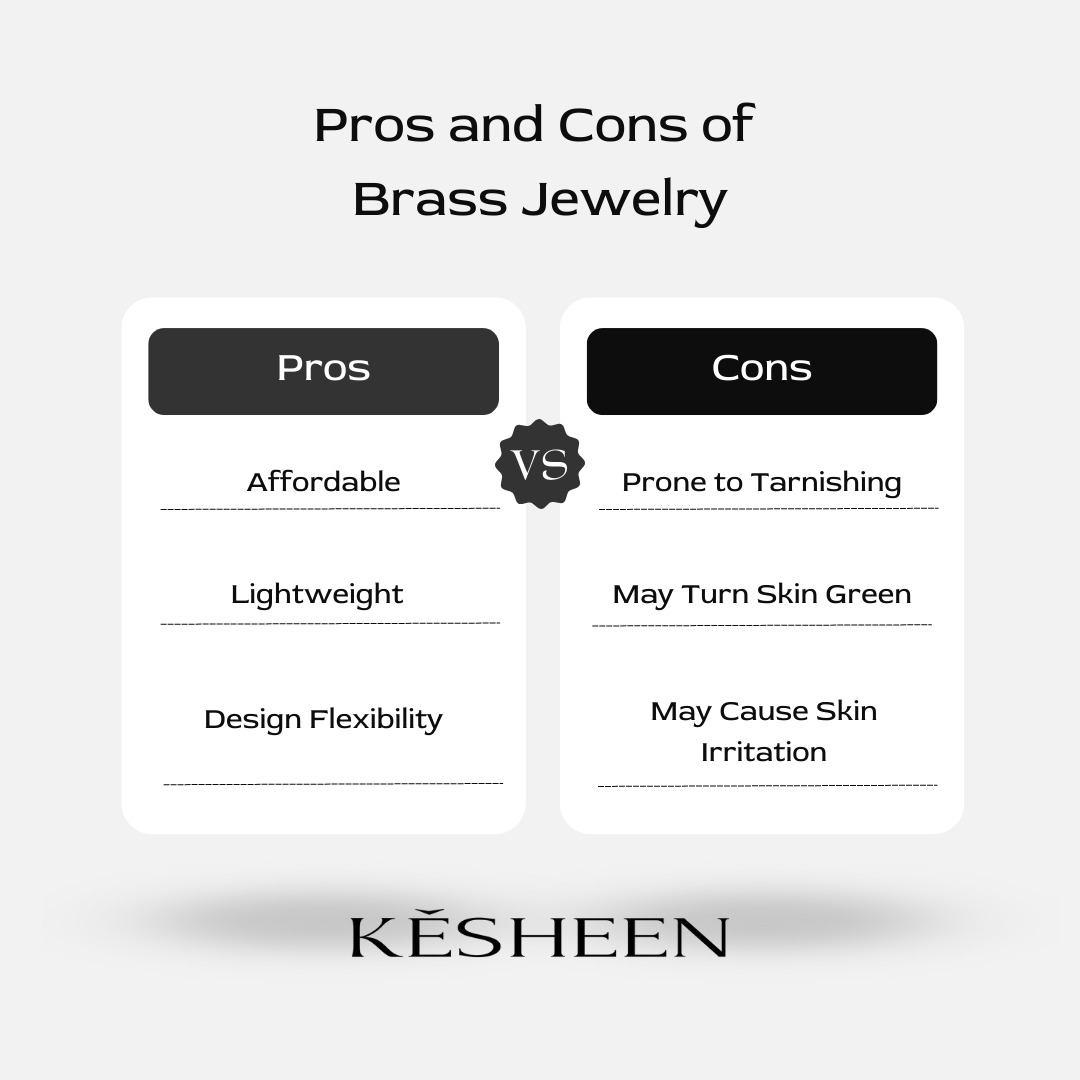
Key Differences between Stainless Steel, Sterling Silver, and Brass Jewelry
Many people ask, “Is stainless steel the same as sterling silver?” or “Is stainless steel or brass better for jewelry?” Here’s a quick comparison to help you decide when comparing brass vs sterling silver vs stainless steel:
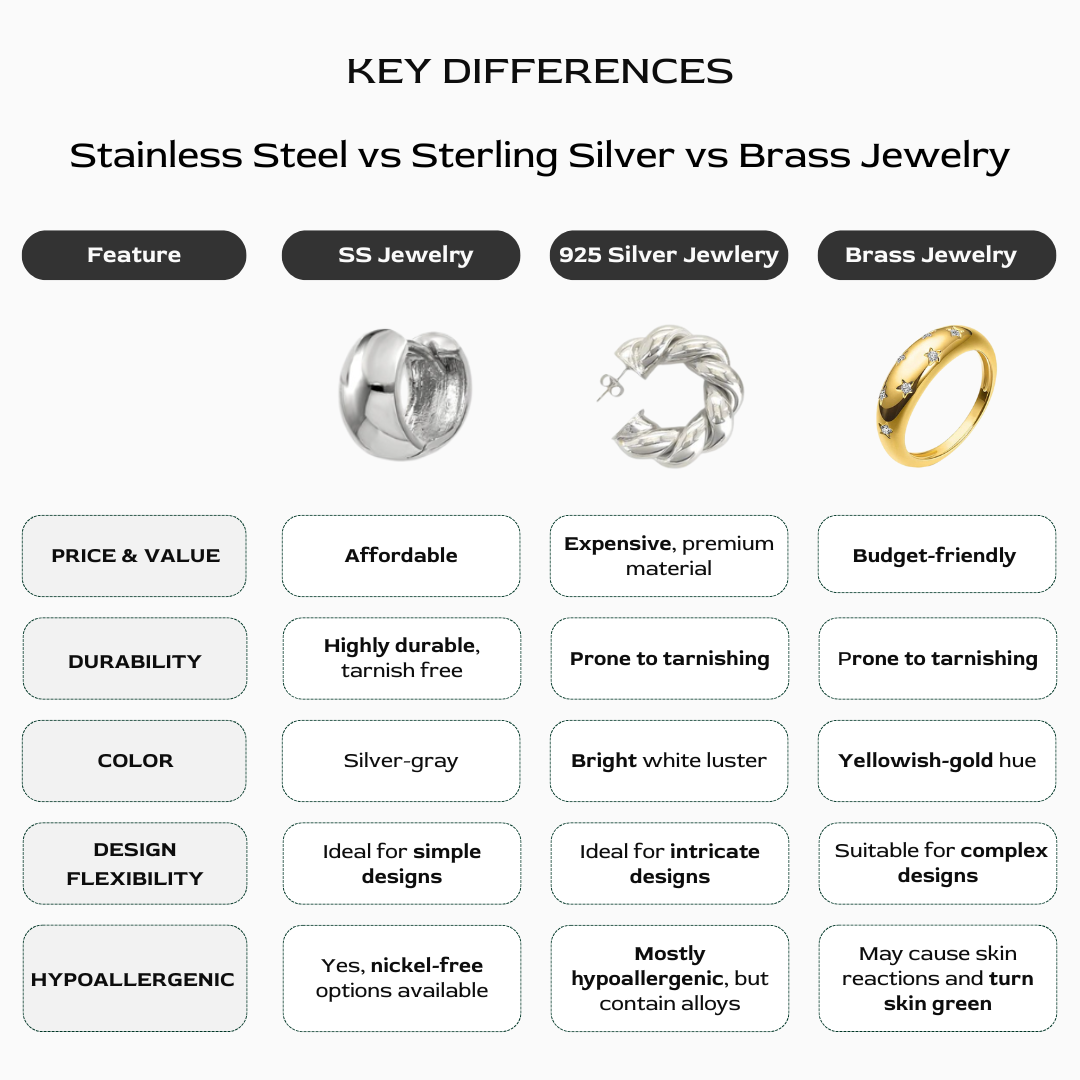
1. Price and Value
A notable difference between stainless steel vs sterling silver vs brass is in their price & value.
- Stainless Steel: It’s quite affordable and retains its value for a long time since it doesn’t tarnish easily.
- Sterling Silver: An expensive and premium material that’s most valuable by luxury and high-end markets.
- Brass: A cheap metal, but it is not worth as much as sterling silver or stainless steel.
2. Durability and Longevity
Another major difference between stainless steel and sterling silver and brass is durability & longevity.
- Stainless Steel: Whether stainless steel without coating or PVD gold coating on jewelry, stainless steel’s durability, waterproof, and tarnish resistant properties are the best. PVD coating enhances its durability and longevity. PVD coating is better than electroplating for stainless steel jewelry.
- Sterling Silver: It’s less durable than stainless steel, even with rhodium plating or gold plating. Sterling silver is softer and prone to tarnishing.
- Brass: This is the worst among the 3 metals. It tarnishes quickly and reacts with moisture/sweat, revealing the base color of the brass.
3. Color and Appearance
Color & appearance is a major highlight in comparing the difference between brass and stainless steel and sterling silver.
- Stainless Steel: Can be plated with a variety of colors, like silver and brass jewelry. The plating color on stainless steel is relatively dark compared to silver and brass.
- Sterling Silver: The plating color such as 18k gold plating can be adjusted to different yellow colors, whether lighter or darker. Generally, the plating color is brighter and with better gloss.
- Brass: Usually a yellowish-gold hue, developing a vintage patina over time.
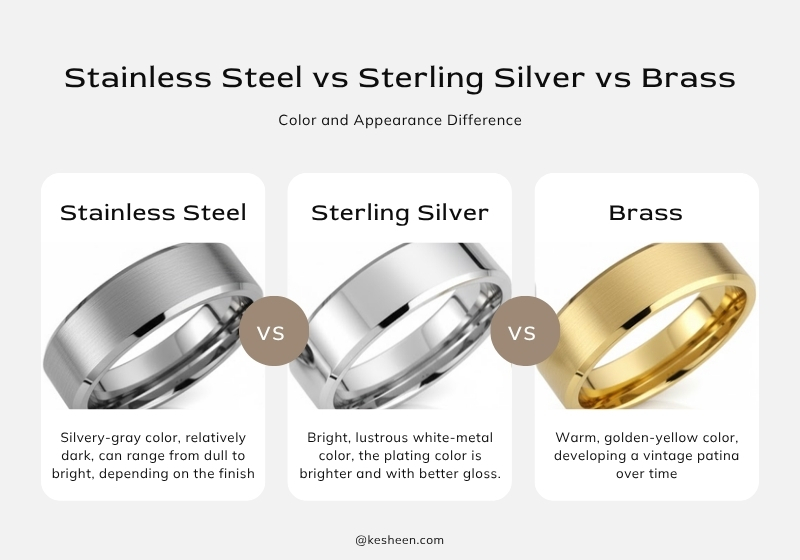
Are All Silver Color Jewelry Made from Silver Metal?
No, not all silver color jewelry pieces are made from silver metal. The color of an original steel is similar to the color of silver. In fact, when 925 silver is plated on a stainless steel or brass base metal, it can have a silver-like color.
4. Hypoallergenic
One other factor when comparing stainless steel vs brass vs sterling silver is their hypoallergenic properties.
- Stainless Steel: This is one of the winning factors when people ask “is stainless steel good for jewelry material?” Generally, stainless steel is good for making jewelry for everyone, including those with sensitive skin. Though it contains a small amount of nickel, its nickel release is too small to pose an allergy risk for most wearers, and it can be considered nickel free.
- Sterling Silver: Mostly hypoallergenic but contain 7.5% copper alloy, which may irritate copper-sensitive wearers.
- Brass: Contains copper and zinc, which can cause skin reactions and make the skin green.
5. Design Flexibility
Is stainless steel better than sterling silver and brass? Another determinant to consider is their design flexibility.
- Stainless Steel: Quite hard, making it ideal for simple and relatively complex designs.
- Sterling Silver: Quite malleable, making it ideal for intricate designs.
- Brass: Very soft, making it suitable for complex and detailed designs.
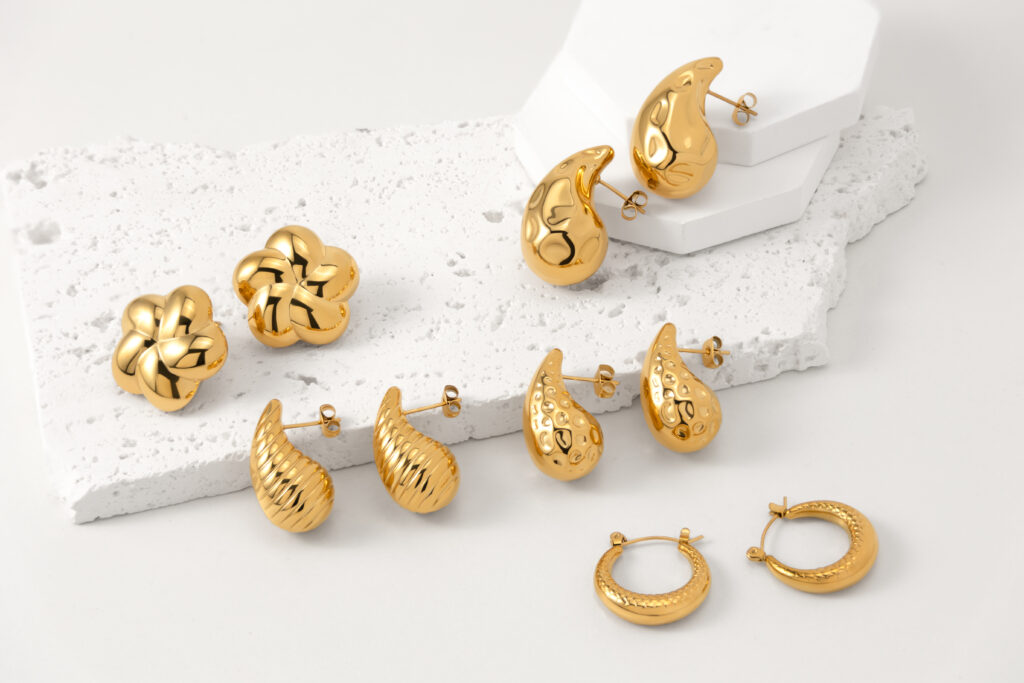
Stainless Steel vs Silver vs Brass Jewelry: Which is Right for You?
Choosing between brass vs sterling silver vs stainless steel jewelry is dependent on factors like your budget, skin sensitivity, durability, and purpose. Here’s what you need to know before choosing stainless steel jewelry for your collections.
For Jewelry Brands
Go for Stainless Steel When:
- Durability and longevity is your top priority.
- Budget is a major concern.
- Your focus is on skin-friendly and sustainable practices.
- Your target is fashion jewelry with simple and relatively complex designs.
Opt for Sterling Silver When:
- There’s no restriction on budget.
- Your focus is on semi-fine jewelry, with extra glamour and appeal.
- Your target is sophisticated jewelry with intricate designs.
Choose Brass Jewelry When:
- Your focus is on complex designs but have a limited budget.
- Your target is fashion jewelry and trendy pieces.
- Durability and skin sensitivity is not your top concern.
For Consumers
- Firstly, consider your skin. If you are prone to reactions, stay clear of brass jewelry.
- Choose according to your budget. Sterling silver is the most expensive, stainless steel is mid-range, while brass is cheap.
- How long do you intend to use the jewelry? Stainless steel lasts longer than both of them. Brass tends to quickly tarnish.
Conclusion
In this post, we’ve elaborated on brass vs sterling silver vs stainless steel jewelry, highlighting their pros, cons, and notable features. This will help you make an informed decision on the right choice for you. Above all, it’s essential that you order from a reputable stainless steel jewelry manufacturer to avoid getting a subpar product.
FAQs
Both have their strengths. Brass offers a warm gold tone and is ideal for intricate designs, but it can tarnish over time without proper plating. Stainless steel is stronger, hypoallergenic, and tarnish-resistant — ideal for long-lasting, everyday jewelry.
Each has its pros. Sterling silver gives a classic, premium look but needs rhodium plating or e-coating to maintain its luster. Stainless steel is durable, low-maintenance, and resists tarnish — ideal for brands wanting longevity and easy care.
Yes, brass can be plated with a silver layer to mimic sterling silver’s look. However, silver-plated brass tends to tarnish easily; it is not as durable as rhodium-plated brass.
Not necessarily — it depends on purpose. Both are ideal for intricate designs. When comparing brass vs sterling silver, brass is affordable and great for fashion pieces. In contrast, sterling silver offers higher value, brightness, and prestige, making it better for fine or sentimental jewelry.

